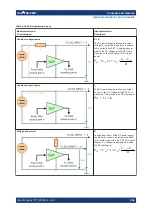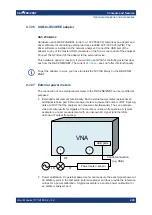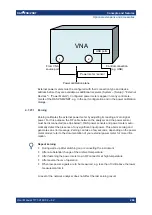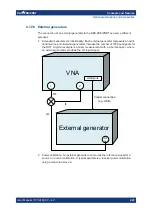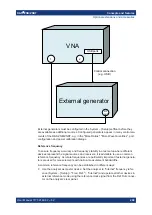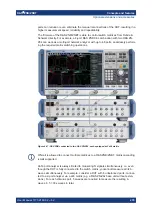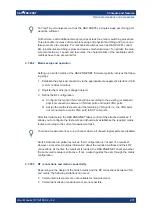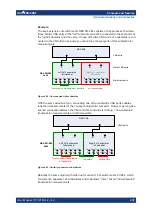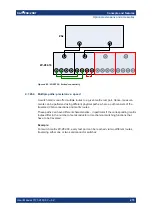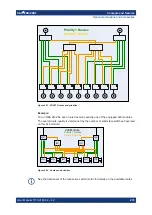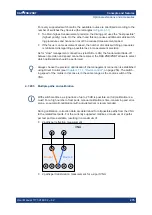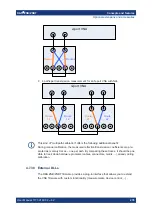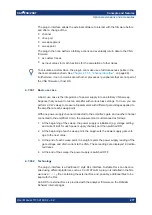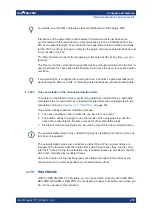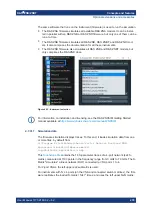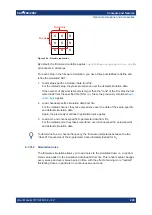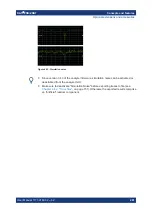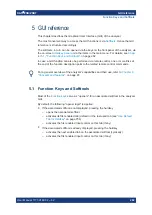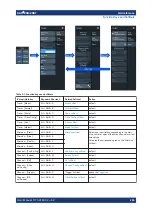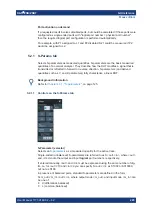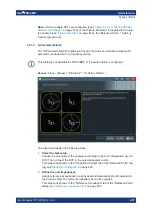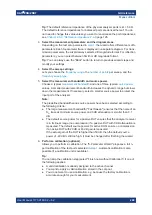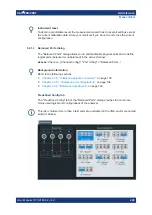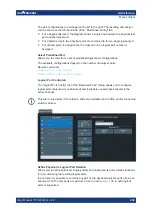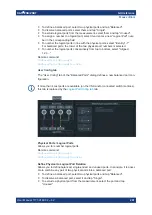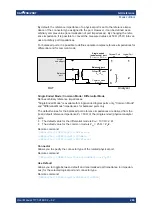
Concepts and features
R&S
®
ZNB/ZNBT
278
User Manual 1173.9163.02 ─ 62
For details, see the HTML help topics that are distributed with the plugin SDK.
Interactions of the external DLL with analyzer firmware and external devices are
synchronized with the measurement. Synchronization is done via callbacks from the
FW, at so-called interrupts. At an interrupt, the measurement takes a break and waits
for the FW to continue. During an interrupt, the plugin can access external devices and
return results to the FW.
The VNA firmware can abort the processing in the external DLL at any time, e.g. on a
[Preset].
The DLL can handle certain trace types that must be uniquely named within the DLL. A
naming scheme for traces allows the firmware (and hence the user) to request a partic-
ular trace.
If an external DLL is configured for permanent use, it performs a particular task (such
as switching the state of a DUT or controlling external devices) without providing data.
4.7.30.3
Trace calculation in the channel calculation chain
To enable the calculation of trace results using data from external DLLs, a dedicated
calculation step for external DLLs is inserted directly before the averaging step in the
calculation chain (see
This position allows maximum flexibility, because:
●
The trace calculation chain is limited to one input for one output
●
The position allows the plugin to use the results of the averaging step, and the
trace data is calculated in the same way as for other calculation steps
●
All internal measurement types can be used as input for the new calculation step
The new calculation step is only enabled if a plugin is installed (and active), and a cus-
tom trace is requested.
The new calculation step serves all active external DLLs. When custom traces are
requested, the firmware asks the related DLLs which input traces they need to calcu-
late "their" traces. During the calculation, the requested inputs are provided to the DLL,
which then calculates its requested traces.
Due to its position, all internal trace types are allowed as inputs. External types are
also allowed if no circular dependency is created between them.
4.7.31
R&S
ZNXSIM
With the R&S
ZNXSIM PC simulation, you can have all the functions of an R&S
ZNA,
R&S
ZNB, R&S
ZNB or R&S
ZND on your desktop. Always accessible, even when you
do not have access to the hardware.
Optional extensions and accessories

